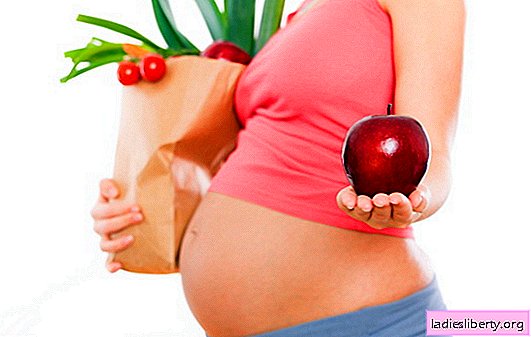
The surprise and joy of pregnancy is complemented by the body's need to adapt to physiological changes for the development of the fetus.
Not all changes during nine months of pregnancy are pleasant.
One of the most common conditions in women is anemia during pregnancy, by the third trimester, up to a third of women suffer from it.
Let's see what is anemia during pregnancy, what causes it and when it is dangerous.
Anemia - what is it?
Anemia is any condition where the body does not produce the right amount of healthy red blood cells. The first case of anemia was described 4000 years ago, and is still the most common blood disorder.
Red blood cells are crucial for the functioning of the human body. They carry hemoglobin, a complex protein that contains iron molecules. The main function of these molecules is to carry a sufficient amount of oxygen from the lungs to the rest of the body and its organs. If the body does not maintain a sufficient level of red blood cells, the patient begins to experience a feeling of fatigue or weakness.
To date more than 400 types of anemia are knownwhich are usually divided into three main groups depending on their reasons:
• anemia caused by blood loss;
• anemia caused by low red blood cell levels or their inferiority;
• anemia caused by the destruction of red blood cells.
What causes anemia
For the production of red blood cells is important intake of iron, vitamin B-12 and folate. On average, from 0.8 to 1 percent of the red blood cells of the body are replaced every day, and the average lifespan of red blood cells ranges from 100 to 120 days. Any process that has a negative impact on this balance between the formation and destruction of the red blood body can well lead to anemia. The causes of anemia, as a rule, are divided according to the principle of influence on erythrocytes: a decrease in the rate of production of red blood cells or an acceleration of their destruction.
Factors that reduce the production of red blood cells:
• inadequate stimulation of red blood cell production with erythropoietin, a hormone produced by the kidneys;
• lack of daily intake of iron, folate or vitamin B-12;
• hypothyroidism.
The factors for the development of anemia that cause the destruction of red blood cells include many diseases and conditions (including anemia during pregnancy), described below.
However, iron deficiency remains the most common cause of anemia. Iron consumption is considered the main indicator for assessing the health status of nations. According to WHO, about 2 billion people worldwide suffer from anemia, most due to a lack of iron in the body.
Anemia during pregnancy: causes
In addition to the physiological needs of the mother, there is an additional need to create "building blocks" for the optimal development of the child. This whole "construction" requires a lot of energy and oxygen.
During pregnancy, the body produces more blood to support the growth of the fetus. If a pregnant woman does not receive enough iron and some other nutrients, her body is not able to produce the required number of red blood cells for such a volume of blood.
Anemia during pregnancy is dangerous because there is a lack of healthy red blood cells in the blood, and the mother’s body and the developing fetus do not receive the proper amount of oxygen.
A moderate state of anemia during pregnancy is considered normal, but more severe forms of the disease, associated with a lack of a number of vitamins and nutrients, require immediate correction. Severe anemia in pregnant women leads to serious complications, including premature birth or miscarriage.
Anemia during pregnancy is defined as a hemoglobin concentration of less than 110 g / l (less than 11 g / dl) in venous blood. It affects more than 56 million women worldwide, two thirds of them in Asia. Despite the wider distribution in less affluent countries, women from developed countries also suffer. The global prevalence of anemia in pregnancy is approximately 41.8%
Anemia is a co-occurring condition or a major cause of 20–40% of maternal deaths.
Symptoms of anemia during pregnancy
Women with mild or moderate anemia often do not experience signs of the disease, and anemia is detected by routine examinations during pregnancy.
As the disease progresses, anemia can cause symptoms:
• tiredness;
• irritability;
• general weakness;
• headache (in the frontal lobe);
• shortness of breath;
• strong thirst;
• frequent sore throat;
• brittle nails;
• loss of appetite and dysphagia.
Clinical signs of anemia include:
• pale skin;
• blue sclera;
• pallor of conjunctiva;
• skin and nail changes;
• swelling of the legs;
• gum and tongue diseases (glossitis and stomatitis);
• tachycardia and functional heart murmurs.
Anemia is considered a relatively normal condition during pregnancy, and is explained as follows. Plasma is a watery, non-cellular component of the blood. During pregnancy, there is an increase in blood plasma to supply oxygen and nutrients to the most pregnant and growing baby. The total number of red blood cells can increase to 20%, but the amount of plasma increases even more, causing the body to dilute these red cells. The hemoglobin level during pregnancy can naturally decrease to 10.5 g / dl, causing natural anemia during pregnancy.
Normally, in healthy women during pregnancy, hematocrit decreases by 38–45%, to about 34% at the end of a single pregnancy and to 30% at the end of a multiple pregnancy. Despite hemodilution, the capacity remains normal throughout pregnancy. Hematocrit usually rises rapidly immediately after childbirth.
The most common causes of anemia in pregnant women
Most often, the condition is caused by a deficiency of iron, folate, vitamin B12, or in hemoglobinopathy.
Iron deficiency anemia during pregnancy
Up to 95% of cases of anemia during pregnancy occur due to iron deficiency. The reasons are usually:
• insufficient intake of iron from food (especially among adolescent girls);
• recent pregnancy
• great loss of iron in the menstrual blood, when every month there is too much iron with menstruation, it does not have time to be absorbed by the body.
Diagnosis of iron deficiency anemia
The main criteria are measurements of the amount of serum iron, ferritin and transferrin. If the level of serum iron and ferritin is reduced, the level of serum transferrin is elevated, a diagnosis of iron deficiency anemia is made.
Folic deficiency anemia in pregnant women
Folate deficiency increases the risk of fetal neural tube defects. A lack of folic acid is experienced by 0.5-1.5% of pregnant women. If the deficit is moderate or severe, they say about macrocytic megaloblastic anemia.
Diagnosis of folate deficiency anemia
To detect anemia, the level of serum folate is measured - with a reduced level of folate in the blood serum, the diagnosis is confirmed and treatment is prescribed.
Hemoglobinopathy during pregnancy
During pregnancy, hemoglobinopathy, in particular sickle cell anemia, can complicate pregnancy and childbirth. This type of chronic anemia, severely severe, increases the risk of developing infectious diseases in pregnant women (endometritis, pneumonia and urinary tract infections), heart failure, hypertension, and even pulmonary infarction.
As pregnancy develops, hemoglobinopathy progresses. In mild form with appropriate correction, sickle cell anemia during pregnancy does not cause life-threatening complications, most often a woman is affected by UTI.
Children in pregnant women with sickle cell anemia are often born prematurely, have low weight and slow growth.
Diagnosis of hemoglobinopathy
Since hemoglobinopathy is a genetic disease, it is diagnosed using genetic tests, it is mandatory to study hemoglobin electrophoresis.
B12 deficiency
Vitamin B12 also plays a key role in the formation of red blood cells. If a pregnant woman does not receive B12 with food, the level of erythrocytes is greatly reduced, or they are produced defective. Vitamin B12 deficiency during pregnancy causes both abnormal development of the fetal neural tube and premature labor.
Factors of anemia during pregnancy
All pregnant women are at risk of anemia, but it increases in the following cases:
• anemia before pregnancy;
• multiple pregnancy (more than one child);
• recent previous pregnancy;
• abundance of vomit from morning sickness and toxicosis;
• adolescence;
• lack of iron-rich foods.
Anemia during pregnancy: diagnosis of possible diseases
Any disorder that destroys red blood cells faster than the body produces them can lead to anemia. Diseases that accelerate the destruction of red blood cells, or remove them from the body:
• hemorrhage from accidents, gastrointestinal disturbances, heavy discharge during menstruation, childbirth, uterine bleeding, surgery;
• cirrhosis with scarring;
• fibrosis or scar tissue in the bone marrow;
• Rh incompatibility or some drugs that cause hemolysis;
• diseases of the liver and spleen;
• genetic disorders.
Anemia during pregnancy: treatment (drugs and folk remedies)
Correction of the anemic state depends on the reasons that caused it:
1. Iron deficiency - pregnant women are prescribed 325 mg of iron sulfate orally once a day, in some cases 100 mg of iron dextran intramuscularly. The course of treatment is 3 weeks. If treatment is ineffective, folic acid deficiency can be suggested.
2. Folic acid deficiency - 1 mg of folic acid orally daily. A severe form of this anemia requires an examination of the bone marrow and prolonged therapy in a medical institution.
3. Vitamin B12 deficiency is easily eliminated by proper nutrition, in which dairy products, meat, poultry and eggs are necessarily present. In some cases, prescribed additional medication.
4. Hemoglobinopathy (sickle cell anemia) during pregnancy is difficult to treat. In case of illness in a severe form of a pregnant woman, red blood cell transfusions are made or anticonvulsant drugs are prescribed.
People advise to increase the use of freshly squeezed juice of beets, carrots and radish. Mix them in equal quantities and take 1 tablespoon before meals. The course of treatment for at least three months.
In addition to juices, as a folk remedy for anemia during pregnancy, hellebore is recommended. But you need to talk about its use with your doctor.
Anemia during pregnancy: prevention
The best prevention of anemia during pregnancy or planning is proper nutrition. It is necessary to eat foods with a high content of iron (red meat, dark green leafy vegetables and greens, eggs, root vegetables and fortified cereals). During pregnancy, the body should receive at least 27 mg of iron per day. If after the results of blood tests revealed a lack of iron or folic acid, you need to contact your doctor for the appointment in the form of food additives.











